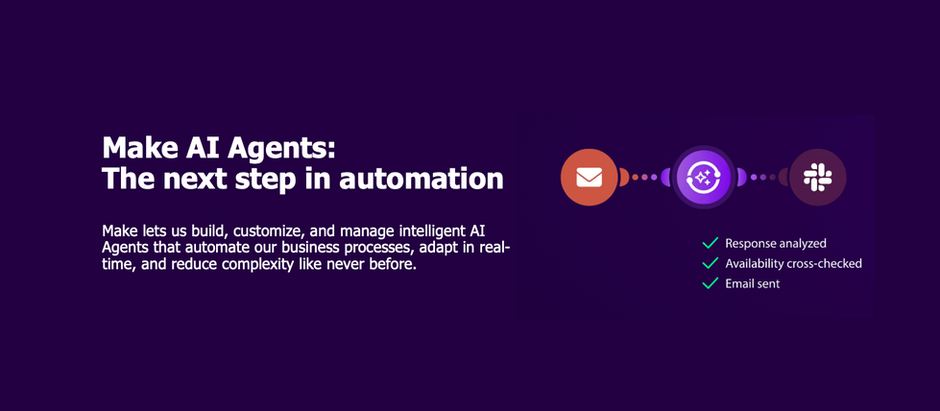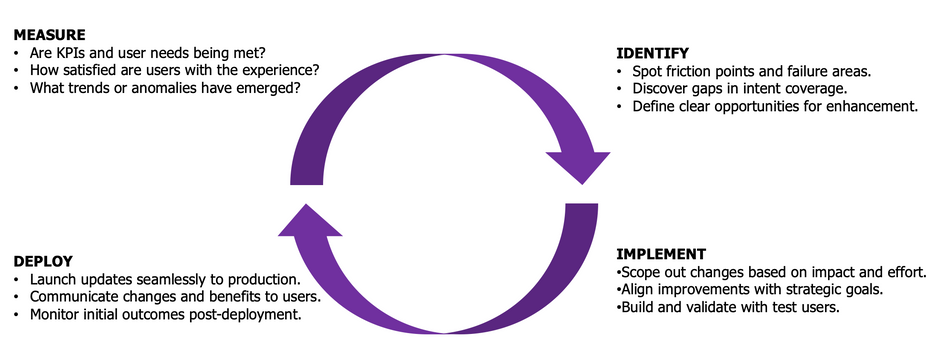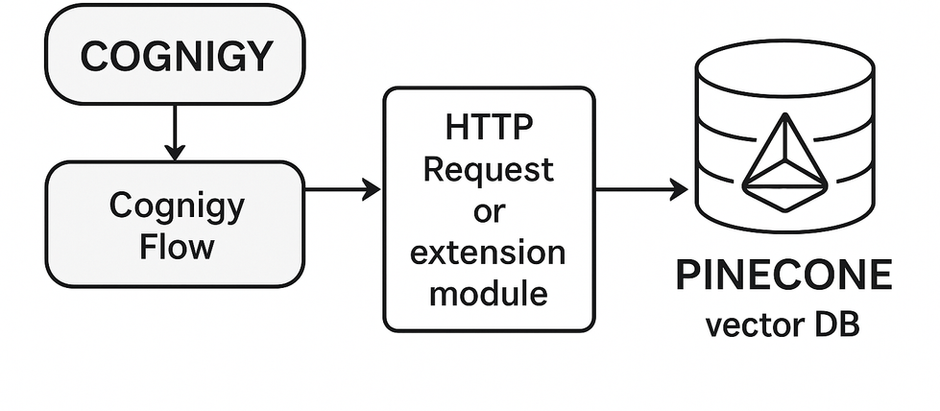top of page


Prompt Instructions Template for AI Agents
1. Identity – Define who the agent is 🔹 Purpose: Establish the agent’s professional persona and domain. 🔹 Instructions: Give the...
May 272 min read


High-ROI AI Agents for Small and Medium-Sized Enterprises (SMEs)
The Big Opportunity: AI Agents for the Real Economy. The next wave of economic transformation won’t come from another social app or finance tool. It will come from democratizing access to high-leverage, cost-effective AI Agents for SMEs. The opportunity? Massive
May 273 min read


From Robotic Process Automation (RPA) to Agentic Process Automation (APA)
In the evolving landscape of business automation, we’re standing at a pivotal crossroads. The automation of yesterday—rigid, rule-based,...
May 272 min read


Make AI Agents: The Next Step in Automation
As low‑ and no‑code platforms proliferate, organizations increasingly seek ways to automate not only routine tasks but entire decision...
May 274 min read


The AI Agent ROI Playbook
In today’s hyper-competitive landscape, enterprises are unlocking extraordinary returns by deploying AI agents across customer engagement, internal knowledge workflows, and back-office automation. While the headline numbers can vary, a pragmatic allocation framework looks something like this:
- Customer-Facing Agents (≈50%)
- Internal Knowledge & Search (≈25%)
- Process Automation & Digital Workers (≈25%)
May 222 min read


How We Built a Secure Cognigy AI Extension for Snowflake in TypeScript
Cognigy AI Extension for Snowflake 👉 Curious how we built it? Click here to explore how we created a secure and reusable Cognigy AI...
May 151 min read


AI Agents vs. Agentic AI in Cognigy: Why Multiple Brains Are Smarter
Discover the key difference between AI Agents and Agentic AI in Cognigy. Learn how AI Agents use a single LLM with centralized flows, while Agentic AI enables multiple domain-specific agents to collaborate independently. Understand how this shift powers more scalable, autonomous, and human-like automation.
May 72 min read


A Brief Explanation of Recall, Precision, and F1 Scores for Conversational AI
A Brief Explanation of Recall, Precision, and F1 Scores for Conversational AI.
May 43 min read


Using RAG in Conversational AI
RAG (Retrieval-Augmented Generation) enhances conversational AI by combining search-based retrieval with generative models. It delivers accurate, up-to-date, and context-aware responses by grounding answers in real documents—not model memory—making bots more reliable, adaptable, and easier to maintain.
May 42 min read


Continuous Improvement Lifecycle for Conversational AI
A successful conversational AI requires constant evolution. The Continuous Improvement Lifecycle—Measure, Identify, Implement, Deploy—ensures bots stay aligned with user needs, business goals, and technological advances. Small, focused updates based on real feedback reduce risk, improve outcomes, and keep AI performance high in a rapidly changing environment.
May 42 min read


Understanding Cognigy's intent score: What does 0.90 actually tell you?
In Cognigy, an intent score like 0.90 reflects how confidently the NLU model matches a user’s input to a trained intent. Behind the scenes, it's likely the output of a sigmoid function from logistic regression — a probability-like measure, but not a guaranteed truth. Understanding this score helps you set smarter thresholds, design better conversations, and avoid overtrusting machine confidence.
Apr 273 min read


How to Build a Knowledge Base Like McKinsey in Cognigy.AI Using OpenAI
Learn how leading firms like McKinsey empower employees with AI-driven knowledge bases. In this guide, we show you how to build a dynamic assistant using Cognigy.AI, OpenAI embeddings, Amazon S3, and Pinecone—giving your team instant access to case studies, frameworks, and critical data, faster and smarter.
Apr 273 min read


Cognigy AI: Difference Between Lexicon vs. Knowledge
In Cognigy AI, Lexicon and Knowledge serve distinct purposes in natural language understanding. Lexicon is rule-based, using hardcoded synonyms to normalize input before intent recognition — no word vectors involved. In contrast, Knowledge leverages semantic search with vector embeddings to retrieve answers from documents, making it ideal for dynamic Q&A use cases. Knowing when to use each unlocks smarter virtual agents.
Apr 253 min read
bottom of page

